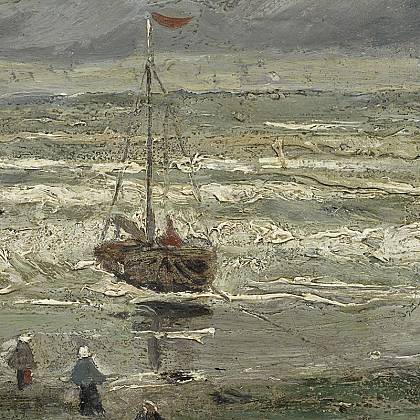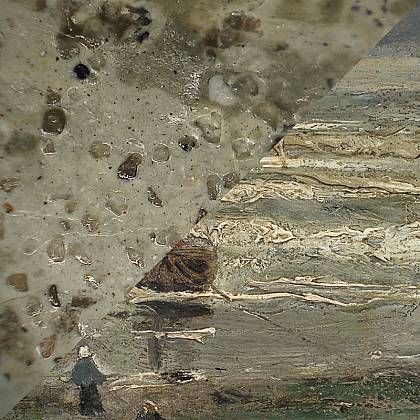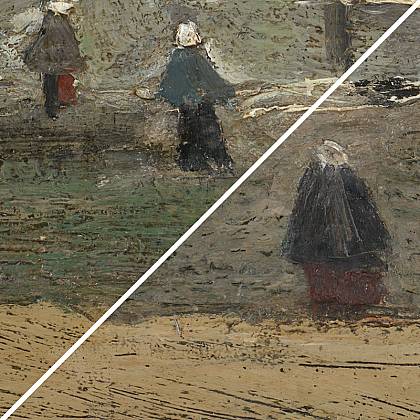Conservation treatment using a 3D printer
View of the Sea at Scheveningen
This painting was stolen from the museum in 2002. After disappearing for 14 years, it finally came home. But it was damaged: a large piece of paint was missing in the bottom left corner, exposing the canvas underneath.
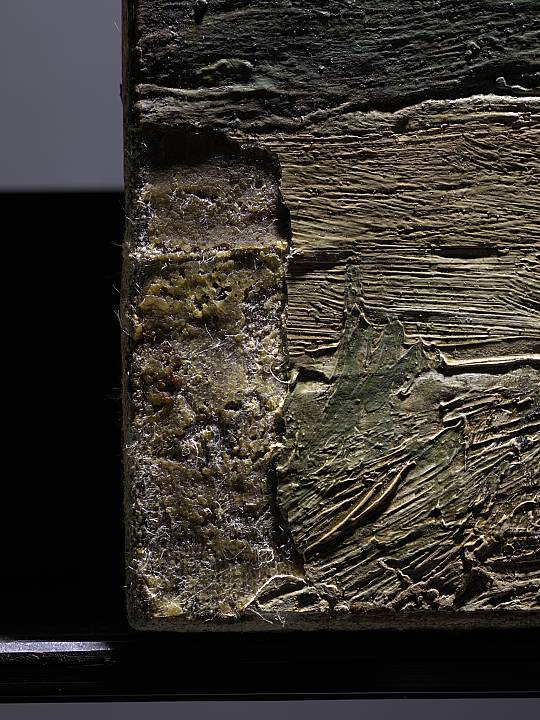
The missing piece (bottom left corner), measuring 7 x 2 centimetres.
The museum’s conservator restored the painting with the help of … a 3D-printer.
A new scanning technique was used to measure the thickness of the paint around the missing piece. It also allowed the area of the missing paint to be measured. Using this information, scientists were able to calculate what the relief of the paint in the bottom left corner would have been. The picture taken in raking light before the robbery also provided important information, of course.
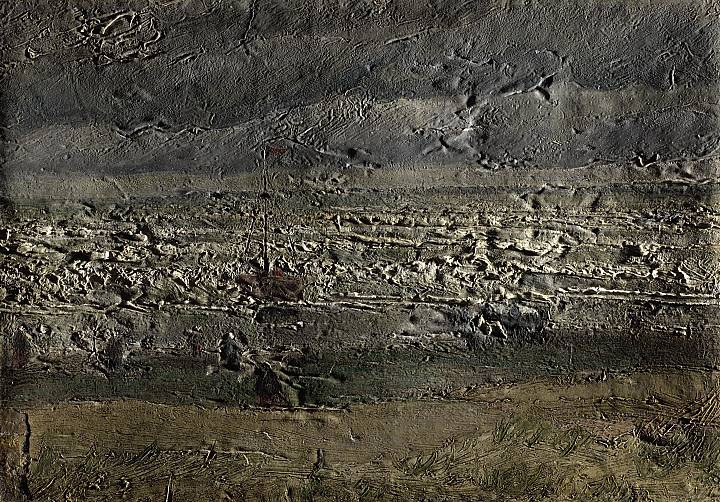
This photo taken in raking light shows the relief of the paint layer. Since the light comes from the sides, peaks and troughs in the paint can clearly be seen.
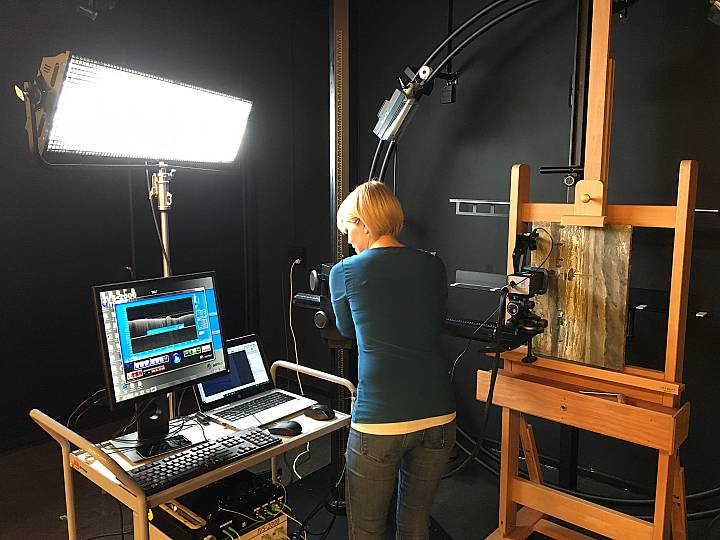
View of the Sea at Scheveningen being scanned with special equipment (Optical Coherence Tomography). Information on the relief and thickness of the paint layers was processed by computer.
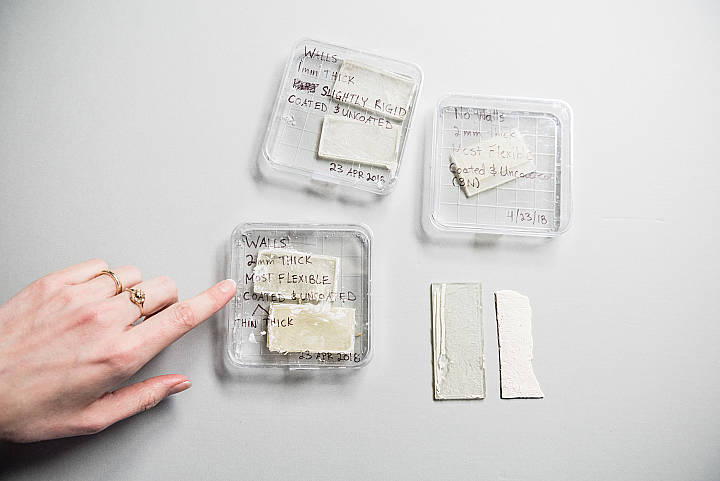
Scientists then used the 3D printer to make moulds that the conservator could use to cast the missing piece. The relief on the surface of the filling precisely matched the brushwork in the original paint.
The hole was then filled just like a dentist filling a tooth. Finally the conservator used a colour photo of the painting from before the robbery to paint (retouch) the filling. The scar is now hidden and everyone at the museum can enjoy the painting as before.
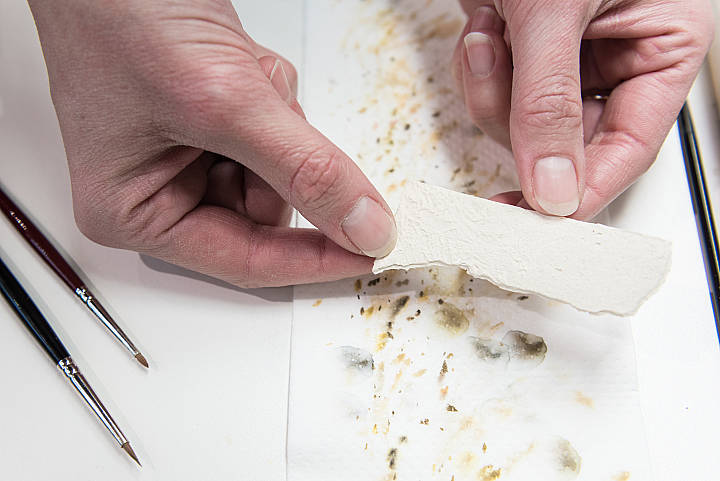
This filling was used to replace the missing corner of the painting.
The conservator’s choice
The seascape came back damaged, so it had to be restored. When it turned out that it was technically possible to make a faithful reconstruction of the colour and the relief of the paint, the museum did not hesitate in choosing this option.
The fact that the painting is missing a piece is no longer visible to the naked eye. The illusion of the image remains undisturbed.
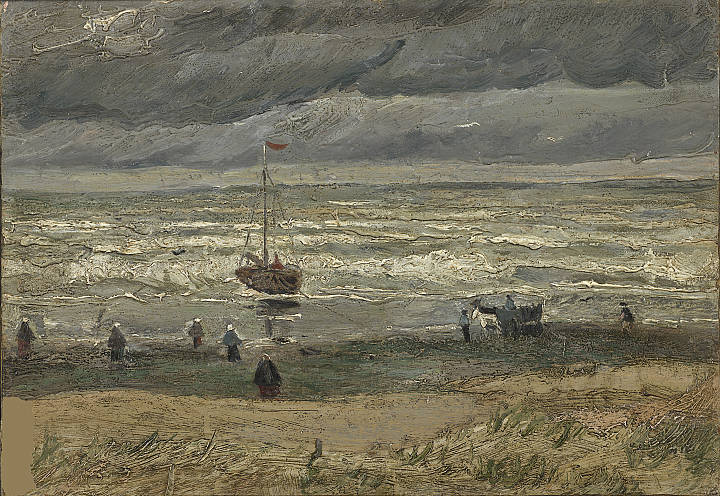
There were also other possible solutions that would have left the damage partly visible. This would have made it clear that this painting has a history.
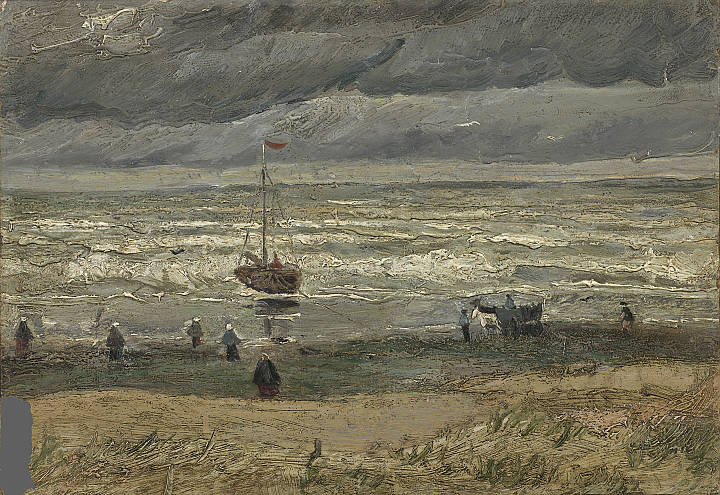
These two retouched photos show how the seascape would have looked if the museum had chosen to restore the missing piece in another way: with a filling in a neutral grey colour, or with a plain colour that matched the ‘overall’ colour of the surrounding paint.
